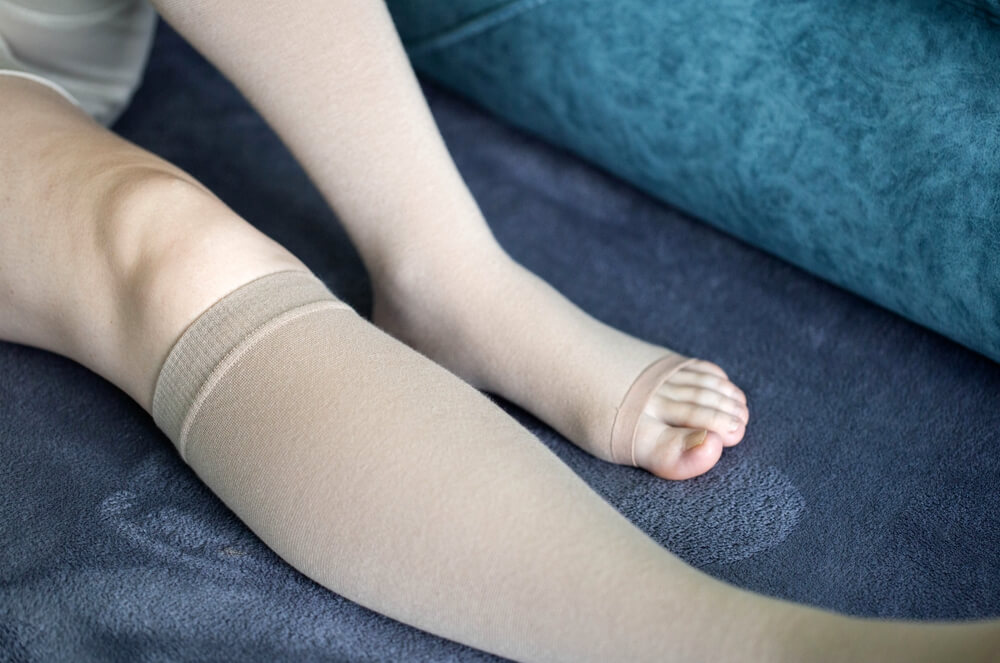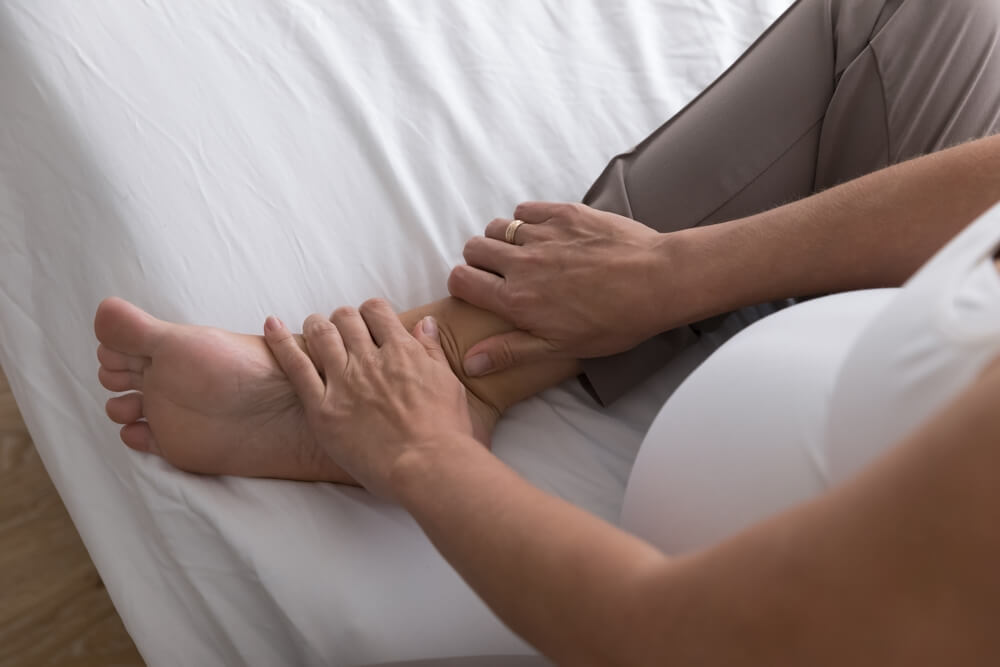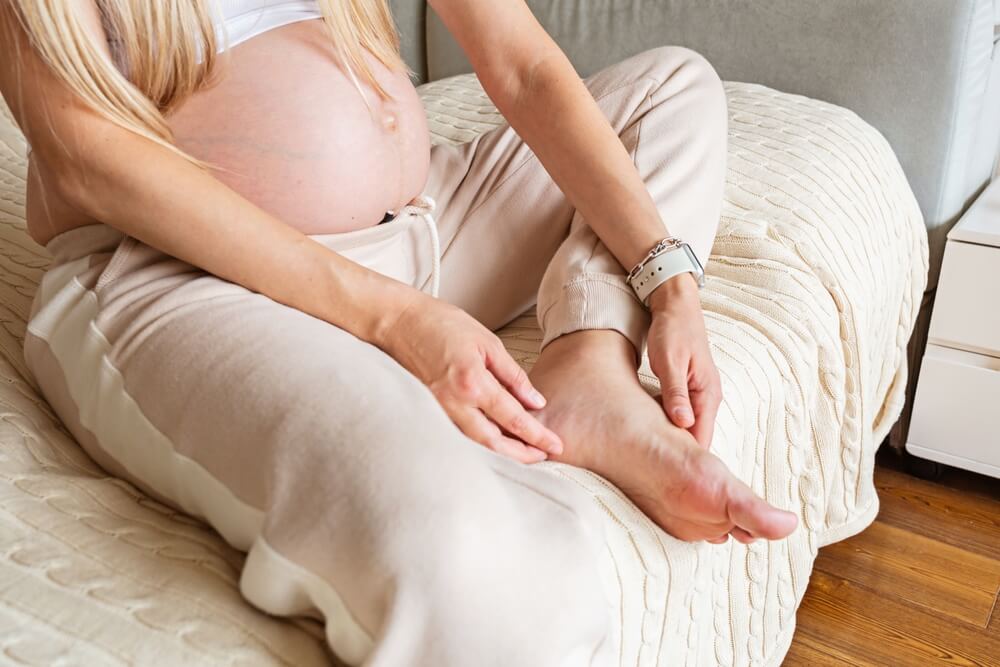Varicose Veins During Pregnancy: What Are They?
The word “varicose” finds its origins in the Latin word “varix,” which translates to “twisted.” This etymology aptly describes the condition, as varicose veins often exhibit a distinctive appearance, resembling lumpy, winding, and twisted ropes beneath the skin. These veins are notably prevalent during pregnancy, particularly in the latter stages, such as the third trimester.
The team here, My ObGYN Specialists, understands that women may have several concerns regarding varicose veins. For instance, do pregnancy varicose veins go away? Can they be treated? Are they dangerous? In this article, our experts deliver all the answers.
About Varicose Veins

Varicose veins during pregnancy primarily manifest in the legs, the external genital area (known as the vulva), and frequently in the vicinity of the ankles. Additionally, it’s worth noting that hemorrhoids, which are essentially varicose veins that form around the anus or within the rectum, are a common occurrence during pregnancy as well. These conditions are typical physiological responses to the changes that occur in a woman’s body during this period.
During this pregnancy, varicose veins and spider veins may also develop. These spider veins are fine red or blue lines that aren’t lumpy but can be seen through the skin.
Veins play a crucial role in the circulatory system, responsible for transporting blood from various parts of your body back to your heart. Within these veins, specialized valves serve as important gatekeepers, ensuring that blood flows in the correct direction.
However, when the structural integrity of vein walls and valves weakens, it can lead to a condition where blood accumulates and forms stagnant pools within the veins. Consequently, these affected areas may become visibly swollen and elevate above the skin’s surface.
Causes and Varicose Veins Symptoms
While a woman is pregnant, the increasing weight due to the growing baby and the accompanying changes that come with pregnancy make her more susceptible to developing varicose veins. More specifically, pregnancy varicose veins may develop due to the following:
- Increase blood volume in the body.
- Higher progesterone levels which tend to decrease valve function and relax the walls of the blood vessels.
- The growing baby may also put pressure on the blood vessels located in the halves, changing the blood flow in the legs and pelvic region.
All in all, these changes and forces can make it more challenging for the blood to travel against gravity to the heart from the legs effectively. On the other hand, constipation is also a common phenomenon in pregnancy, which can lead to the development of hemorrhoids.
When assessing the risk factors that may lead to pregnancy varicose veins, experts usually include the following:
- Genetics: Women whose mother or grandmother also had varicose veins during pregnancy are more likely to experience them as well.
- Diet: Eating foods high in salt, low in fiber, and not drinking enough water can cause water retention, increasing the risk of hemorrhoids and varicose veins.
- Weight: typically, these veins are more common in women who carry excess weight.
Regarding symptoms, some women may experience none at all. Those who do may find that they become worse when standing for long periods or when sitting down.
The symptoms in these cases include:
- Leg cramps.
- Itching around the veins.
- Swelling in the ankles and legs.
- Tenderness, throbbing, aching, and pain in the lower legs.
- Heavy feeling in the legs.
Hemorrhoids are also known to cause itching and pain. Wiping and straining during bowel movements may also lead to bleeding.
Diagnosing Pregnancy Varicose Veins
During a medical assessment for varicose veins, your healthcare provider will conduct a comprehensive examination, focusing on specific areas depending on the symptoms you’re experiencing. This evaluation typically encompasses an examination of your legs, genitals, and rectal region.
In cases where symptoms are particularly severe or if there is a concern about possible complications, your healthcare provider may recommend a Doppler ultrasound. This diagnostic procedure is utilized to measure blood flow in both superficial and deep veins. Its primary objectives are twofold: to gauge the extent of varicose veins and to identify any potential risk factors linked to these veins. Such risk factors may include an elevated susceptibility to deep vein thrombosis, a condition characterized by the formation of blood clots within deep veins. Timely intervention for deep vein thrombosis is crucial, as it can lead to severe consequences, including pulmonary embolism, a potentially life-threatening medical emergency.
Treating Varicose Veins During Pregnancy
Because they are mostly harmless and resolve after pregnancy, providers usually don’t address them.
Still, women can follow the following approaches to relieve the symptoms of varicose veins and stop them from getting even worse:
- Limit sodium intake as it may lead to swelling.
- Sleeping on the left side more often can help with keeping the pressure off the interior vena cave, the massive vein that carries the blood to the heart from the legs.
- Uncorrsing the legs whenever sitting down can improve circulation.
- Avoid sitting or standing for prolonged periods to keep the blood moving.
- Engage in light exercise regularly that’s safe while pregnant.
- Opt for wearing supportive pantyhose, socks, or tights to prevent blood pooling in the legs.
- Raise your feet every now and then to help the blood flow back toward the heart.
So, do pregnancy varicose veins go away? After childbirth, they do, in most cases. However, if they persist even after delivery, doctors may recommend other treatment options such as laser therapy, surgery, and sclerotherapy.
Hemorrhoids, just like pregnancy varicose veins, are considered harmless and often get better after pregnancy.
To manage their symptoms and to relieve the discomfort, you may:
- Use cold compresses or ice packs.
- Consider using rectal creams or stool softeners that are safe during pregnancy.
- Consider taking sitz baths for 10 to 20 minutes a couple of times a day.
- Ensure that you are eating enough fiber and water to avoid constipation.
Can You Prevent Varicose Veins During Pregnancy?

While pregnant, women may prevent varicose veins by improving their blood circulation with the following:
- Avoid sitting with their legs crossed.
- Sleep on their left side.
- Avoid long standing or sitting.
- Using compression stockings or maternity pantyhose.
- Put their feed up frequently throughout the day.
Do Varicose Veins Go Away After Pregnancy?
As mentioned above, they do tend to go away after giving birth. Still, it’s important to remember that varicose veins may worsen with each pregnancy and will be less likely to go away.
Varicose veins are a frequently encountered occurrence during pregnancy, and they typically do not pose significant harm to either you or your baby. They represent a natural response by your body to accommodate the growth and changes associated with pregnancy. Importantly, these varicose veins often tend to resolve spontaneously after childbirth.
Nevertheless, if you encounter discomfort or encounter any other distressing symptoms related to varicose veins during your pregnancy, it is advisable to engage in a conversation with your healthcare provider. They can offer valuable guidance and suggest strategies to help alleviate your symptoms while you await the arrival of your baby, thereby ensuring a more comfortable and manageable pregnancy experience.
That said, you can always reach out to our experts for help and guidance. Schedule an appointment today.


